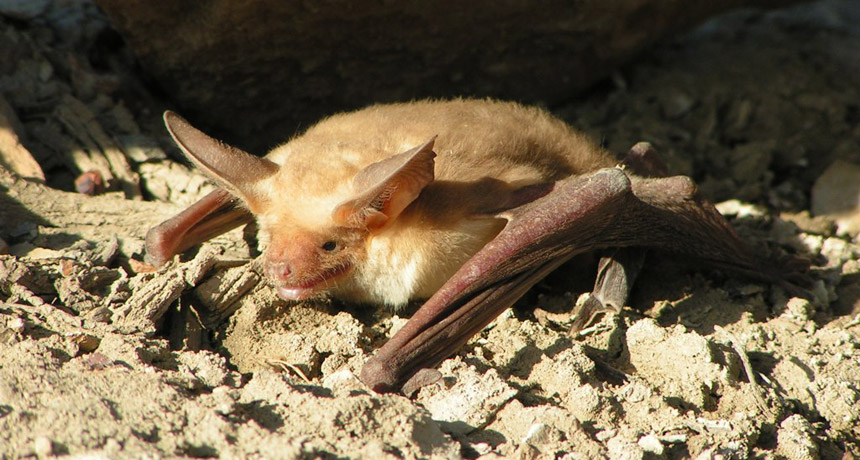Noise may disrupt a bat’s dinner
Mechanical cacophony can drown out the whispers of moving insect prey

SHHHH A pallid bat, which hunts by listening for the tiny noises of crawling insect prey, may have trouble in loud places.
Keaton Wilson/Flickr
Mechanical cacophony can drown out the whispers of moving insect prey

SHHHH A pallid bat, which hunts by listening for the tiny noises of crawling insect prey, may have trouble in loud places.
Keaton Wilson/Flickr